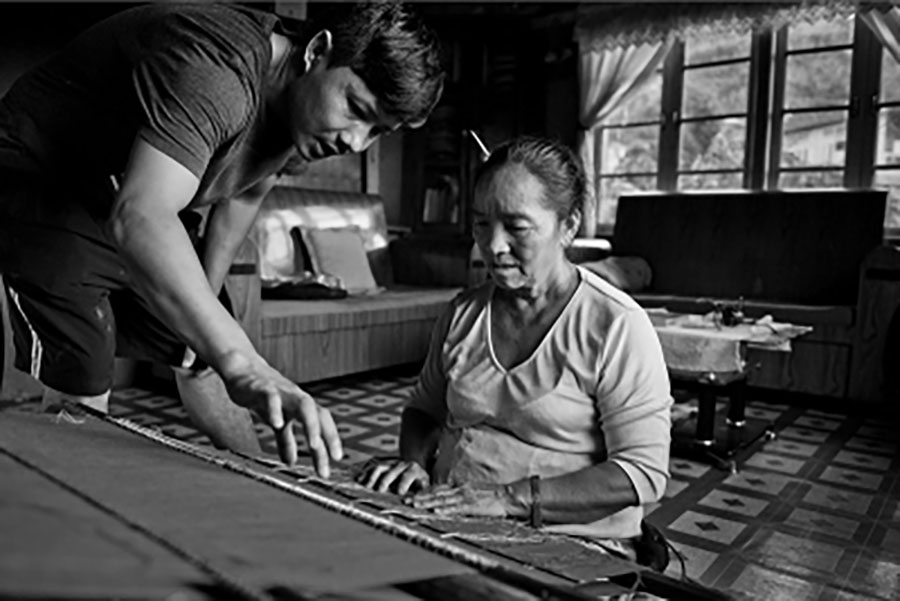
Every day, Charlee Mathlena begins his day at five in the morning with a group of women weavers who are drawn from the interiors of Mizoram. The 36-year-old gives them yarns every week, patiently explains design briefs and, monitors them closely on a daily basis. He has been doing this since 2008 and the passion that drives him, increases every passing day. As one of the few in Mizoram who is zealously trying to revive the rich textiles and handlooms of the state, the task is not easy. For one, preserving a traditional craft called loin loom is tedious. Sustaining it is even tougher. But he believes in the purity of handmade products and is determined to succeed in his mission. Under the banner of Heritage Mizoram, a firm he has founded, he is promoting and preserving the loin loom heritage as well as the vast variety of textiles that are indigenous to Mizoram and slowly losing favour with the younger generation.
Aizawl-based Mathlena talks to NE Travel and Life about the journey he made from his home state to New Delhi to pursue higher education but eventually returned to his roots to follow his passion.
The Trigger
While pursuing a Master’s degree, I worked part-time as a fair assistant during the annual India International Trade Fair (IITF). It was here that I got interested in textiles and handlooms and realised that much more had to be done to promote and further develop the handlooms of my state. The state pavilion, for instance, had limited items. This understanding led to a course in Art History from the National Museum. Armed with enough knowledge to work in the field of textiles, I headed back home, conducted a research on Mizo textiles and handlooms and, eventually in 2008 set up Heritage Mizoram. It is a cottage industry for handlooms and handicrafts which will also provide sustainable employment. Its aim is to keep alive handmade textiles by using natural raw materials. The artisans and weavers working for Heritage Mizoram are all home-based women who come from three adjoining villages of Aizawl and three colonies, who put together their skills under my guidance. I provide them looms, raw materials and designs.
Products of the Loom
The finished products are marketed through fairs, exhibitions, fashion events in India and abroad and bought by individuals. We have also retailed at state emporiums and boutiques in the metros. But presently, we are into local marketing and selling to our regular clients only. My agent in Delhi supplies to buyers in New York, Denmark, Singapore, America and few other countries. I do not want to go beyond what I can manufacture as that may force me to compromise on the technique and quality. Loin loom is a traditional craft - intricate and tedious. To give an example, for a table set consisting of a runner and table mats, a single weave would take about three days because it has to be first woven which can be a backbreaking exercise.
The Challenge
The real challenge that we face is - how to compete with machines and industrial products which have better access to the consumer market? We are working hard to maintain quality and this is what challenges us every day. Our clients are demanding and have the flair for aesthetics and quality, so we put in a lot of thought into controlling our quality. The final quality of products also depends on the quality of yarn sourced from the suppliers. So, I am very particular about where and how I source my material from. At some level, I admit, there is some disappointment with the government. Despite plenty of schemes and projects under Ministry of Textiles, it is a Herculean task to avail these schemes. The process is long and tedious. So, I tend to stay away from availing the benefits.
On a Mission
My ultimate objective is to be able to provide employment to as many artisans in Mizoram as I can. I would like to preserve our traditional mode of weaving, and in the process create sustainable products for the market. The work that I have been doing has enabled me to understand the needs of others. These needs may be different with each person according to his or her skill. For instance, the weavers’ need is different from a wealthier person. However, I have also learnt that we are all in need of each other. One of my main driving forces is my mother, who raised me single-handedly. So, I would like help women and bring about a change in their livelihood. Some of the women weavers at Heritage Mizoram earn more than their husbands. This gives me immense joy.
Future Plan
Currently, we are striving towards making our quality and designs better in the sense of introducing more motifs that are rare. On every front, we are striving to work harder. We are also experimenting with khadi yarns for some of our product line. But most of the khadi yarn I get are not hand-spun; there is a difference in the texture between hand-spun and mechanised product. I hope to have a craft village five years from today so that I can peacefully work with the artisans in a close and peaceful environment, away from the noisy capital.

